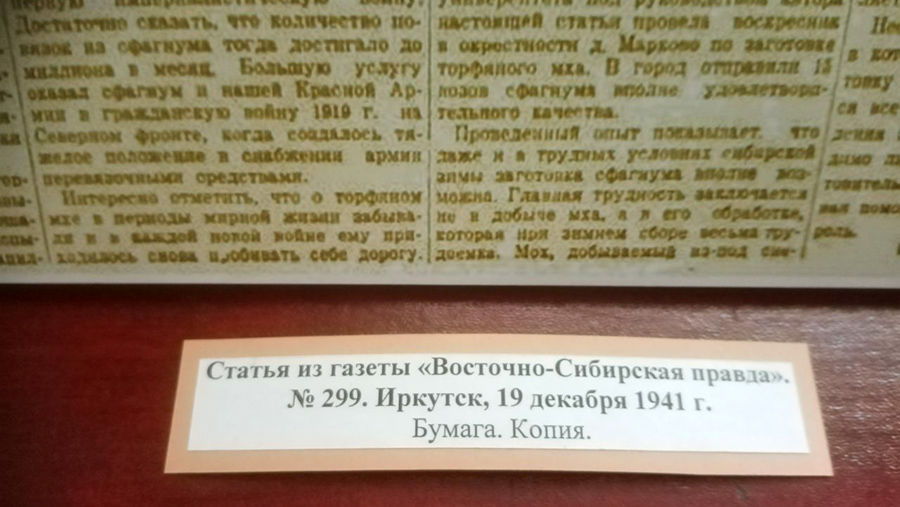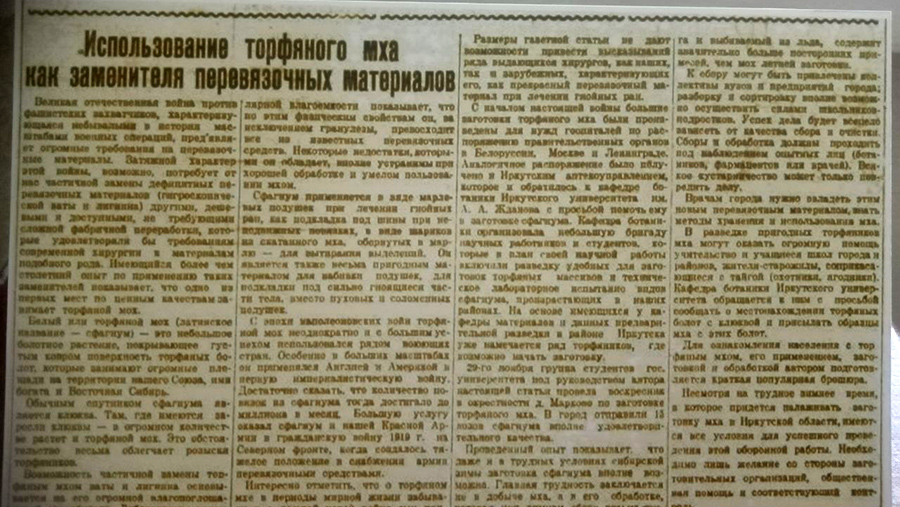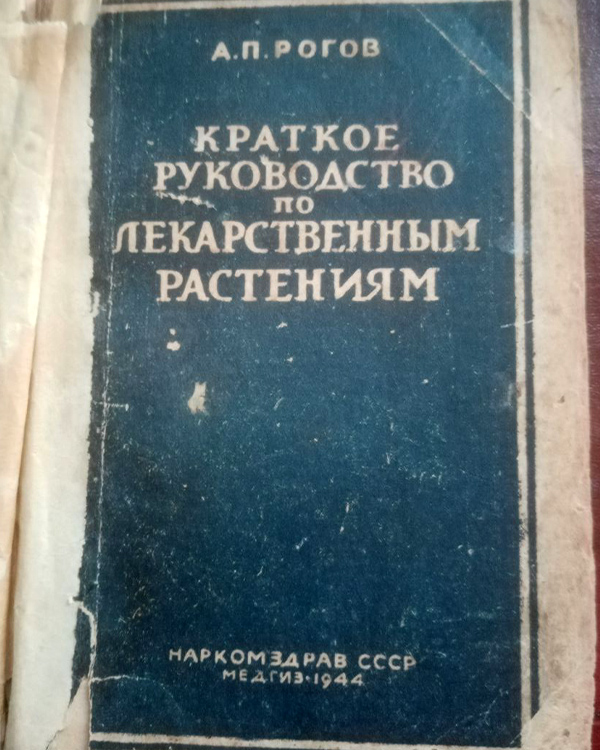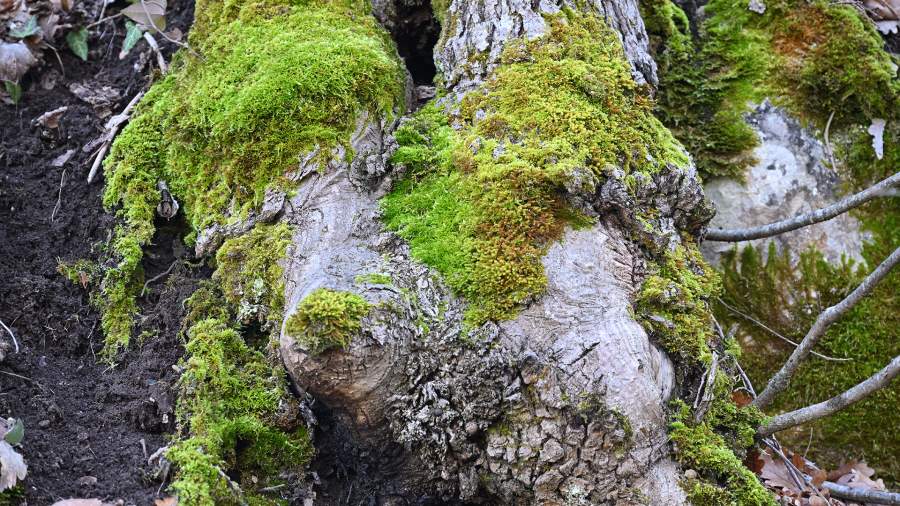Moss — aid: how a swamp plant saved lives in the Great Patriotic War
The Great Patriotic War required a huge strain on Soviet healthcare. There was an acute shortage of bandages for the treatment of the wounded, and the doctors recalled the experience of past military conflicts when sphagnum moss was used for these purposes. Practice has shown that this natural material surpasses classical bandages in its healing properties. Since the beginning of the war, harvesting moss and studying its properties have become tasks of national importance. Irkutsk has become one of the centers for the extraction of plants. In severe frosts, students and teachers of the local university went to the peat bogs in the taiga, where sphagnum usually grows, collected it and processed it in order to transfer it to the front. According to modern doctors, the use of natural materials for wound healing is a very reasonable method that is still used today.
A natural replacement for classic bandages
Already in the first months of the Great Patriotic War, when it became clear that the confrontation with the Nazis would be long and bloody, doctors faced the problem of a shortage of dressings. Specialists began to look for affordable and cheap ways to replace hygroscopic cotton wool and lignin, which were used to treat wounds. According to its properties, peat moss with the Latin name sphagnum could be well suited for these purposes. It is a small plant that covers the surface of swamps. Its thickets were found in huge quantities on the territory of the Soviet Union, and it grew especially abundantly in Eastern Siberia. Irkutsk State University became one of the important centers of its collection for the needs of the front. Zhdanova.
— The possibilities of replacing cotton wool and lignin with sphagnum are based on its enormous moisture absorption capacity. Laboratory tests of its hygroscopic and capillary moisture capacity have shown that in terms of these physical properties it far surpasses all known dressings, except for granulosa (starch grains). And the disadvantages that it does have can be minimized through proper processing," said Sergey Trofimenko, head of the Soldiers of the Fatherland Department at the Irkutsk History Museum.

As indicated in the scientific article "History and prospects of the use of sphagnum mosses in medicine", published in the journal "Doctor" in 2016, the idea of using peat moss for wound healing arose long before the outbreak of World War II. For the first time in Russia, it was used as a dressing in 1882 at the Nikolaevsky Military Hospital and the Mariinsky Hospital in St. Petersburg. In 1889, at the Pirogov Congress of Doctors, Dr. Alexander Genritsi made a report "On peat mosses," and already in 1890, his instructions describing the disinfecting properties of the plant were published in the Military Medical Journal.
Interest in sphagnum from doctors and researchers increased during military conflicts. It was used during the Russian-Japanese (1904-1905) and the First World Wars (1914-1918). During the Russian Civil War, sphagnum gauze pads were made for the needs of Moscow hospitals. However, studies of the material were carried out sporadically and mosses were not included in the list of official medicinal plants of the country.
Serious study of sphagnum in the USSR began in 1939 at the Botanical Institute. Academician V.L. Komarov of the USSR Academy of Sciences. The scientific material collected in the organization on the eve of the war was handed over to the famous doctor Ivan Vinogradov, who later became the chief surgeon of besieged Leningrad.

After the outbreak of World War II, the medical use of sphagnum began on a national scale. On the second day of hostilities, on June 23, 1941, at a meeting of the N.I. Pirogov Surgical Society, recommendations were made on the use of this material and the organization of its preparation for the needs of hospitals and hospitals. The doctors have prepared instructions for its use as a dressing and rules for its collection and storage.

Among other bodies, the Irkutsk Pharmacy Department began collecting moss, which requested assistance from the Department of Botany at Irkutsk University, where a team of students and teachers was organized. On November 29, 1941, they went in search of moss on the peat bogs.
— The usual companion of sphagnum is cranberries. Where there are cranberry thickets, moss can also be found. This made it much easier to find him. The first collection for the needs of the front was carried out in the vicinity of the village of Makarovo. That day, 15 carts of high—quality moss were sent to the city," said Sergey Trofimenko.
However, the main problem was not the collection, but the processing of sphagnum in the harsh Siberian winter. Since the plant was extracted from under snow and ice, it contained a significant amount of impurities. For this reason, the doctors carefully monitored the harvesting process. Schoolchildren and teachers were involved, and local hunters and berry gatherers provided significant assistance, as they knew where to find valuable material in the thicket.
The method is still relevant today
The use of moss for the treatment of the wounded has shown that it has excellent absorbent properties — better than classical dressings. Studies conducted by Ivan Vinogradov claimed that the quality of the dressing material practically does not depend on the variety of the plant, which simplified its preparation. However, according to the results of experiments, it became clear that the types of Sphagnum sections absorb liquid and gas better, break down less and are easier to convert into powder form, which is why they were recommended for use in the first place.
Usually, sterilized gauze pads of various sizes were made from the plant, which were loosely filled with moss. Before applying them to the wound, the doctor carefully moistened them with saline solution. Sphagnum was also added to gauze wipes for draining purulent cavities, made into tire bedding and sterilized sphagnum-gauze balls for wiping pus and blood during and after operations, and even stuffed into pillows and mattresses.
Military doctors named the strengths of sphagnum pads: lightness, softness, elasticity, the ability to adhere to any part of the body, the ease of removal from the wound surface without irritation, the long-term durability of sphagnum bandages for up to 10-14 days, convenience in transporting the wounded and sick, uniform absorption and retention of the purulent discharge fragment of the wound by the entire surface of the bandage, and others. The good ability to absorb gases increased the healing rate due to its bactericidal and therapeutic properties.
— Natural absorbent products are actively used for wound healing in different countries of the world and now. They are able to absorb liquids and are resistant to infections. Many of the things that our grandfathers used are still being used today. Just in a new wrapper," said Alexey Dikarev, a member of the International Association of Maxillofacial Surgeons.
In parallel with this use of moss, his research continued as a basis for new drugs. In 1941, concentrated aqueous sphagnum extracts of several variants were developed in the biochemical laboratory of the Department of Plant Resources of the Botanical Institute of the USSR Academy of Sciences. According to Ivan Vinogradov, they were able to kill Staphylococcus and streptococcus bacteria, have a deodorizing effect and prevent irritation. The development of medicines based on the beneficial properties of sphagnum was carried out for many years after the war.
Переведено сервисом «Яндекс Переводчик»

